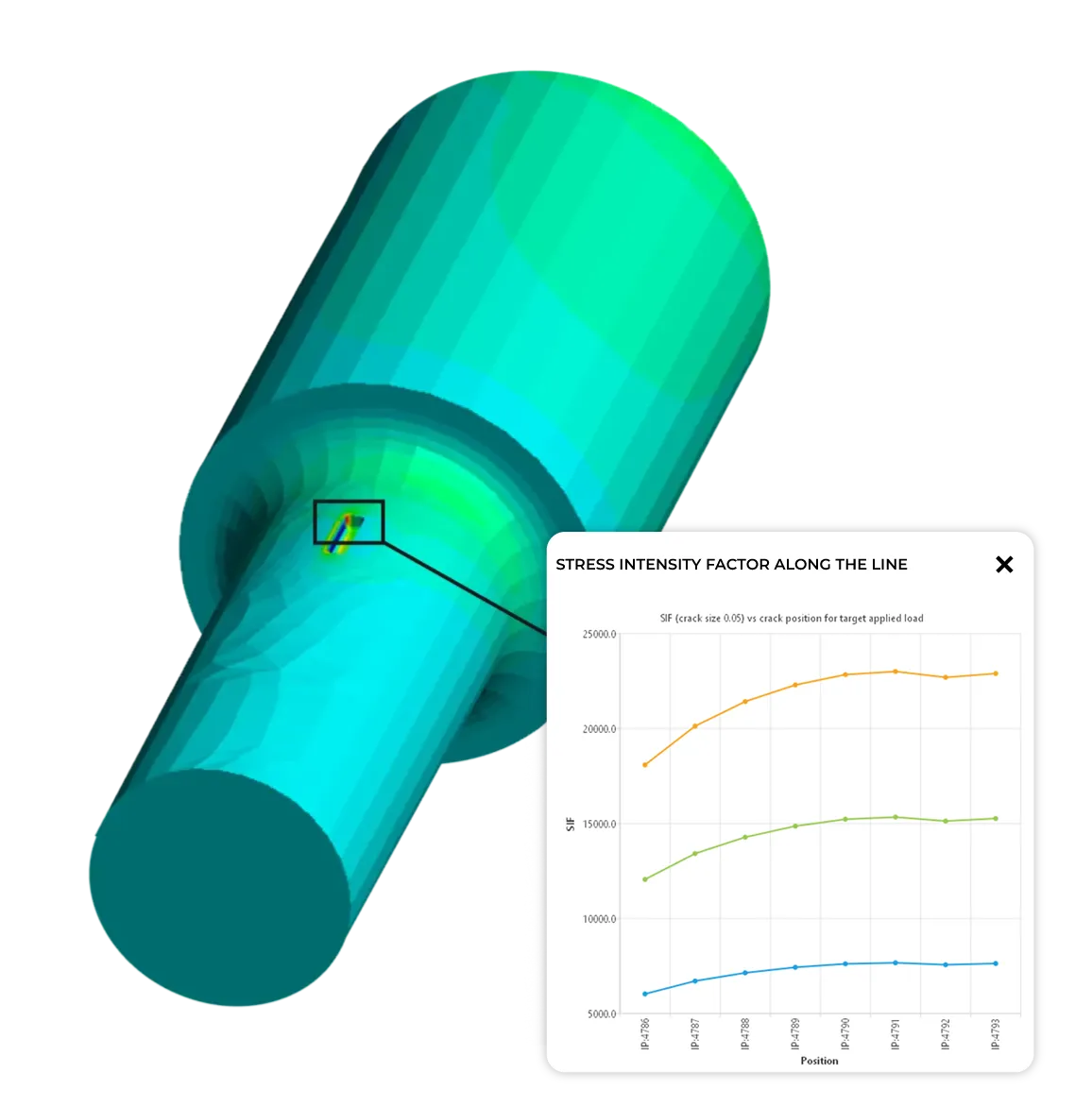FASST

BEASY Fracture Assessment Tool (FASST) can be used to quickly assess the effect of a crack on the structural integrity of a component or structure by calculating the maximum stress intensity factor for a given crack size using the predicted 3D stress at any location. The sensitivity of the stress intensity factor to the crack size at a location can also be investigated and the data viewed graphically.
Material properties of structural components often degrade over time as a result of cyclic loading, fluctuations in temperature, or corrosive environments. This degradation of material integrity may manifest itself as discrete flaws in the structure or through localized loss in the section thickness of a critical support member.
With BEASY FASST there are no restrictions on component geometry, loading, or crack shape. We can help determine critical crack sizes so that you can improve the timing and quality of your inspection and maintenance programs.
Using BEASY’s crack growth technology our staff can define the most likely crack growth path and help your NDT technicians search for flaws in structural components.


Elevate your expertise

BEASY offers a variety of training options: from comprehensive full courses, to webinars and tailored training program, our experts in corrosion and fracture ensure that you get the most out of BEASY's software.



